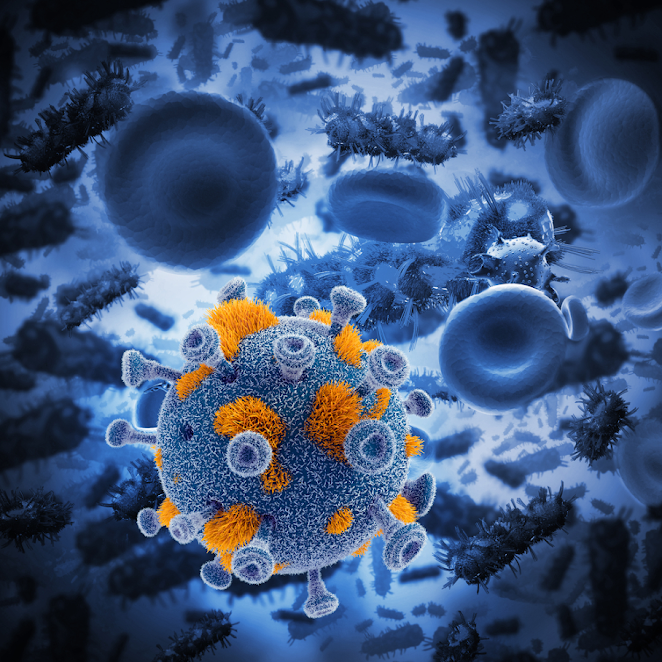By Fariha Fawziah
David Stojdl is a medical researcher who has spent much of his career identifying ways to turn viruses into powerful cancer-killing devices. Some of the initial successes emerging from his work are impressive. For decades, viruses have been known as invaders of human bodies. The word “virus” itself even means “poison” in Latin. Certainly viruses have been a cause of some of the most grueling diseases ever known to humanity, such as smallpox, HIV, polio, and ebola. Over time medical researchers have developed ways for the human body to identify and destroy these sneaky invaders. Vaccinations are among the most successful techniques we use to introduce weakened forms of harmful viruses that can train our immune system to produce antibodies that guard us from future infections.
Recently, however, researchers are applying the lethality of viruses to attack cancer. Since viruses can attack tumors with more precision than chemotherapy or radiation can, virotherapy may turn out to be the most powerful tool in oncology. Viruses are small packages of genetic material enclosed in a protein or lipid shell. When the molecules in the shell “match up” to the molecules on the surface of a cell, scientists refer to this as a lock-and-key mechanism, the virus attaches and inject its genes into the cell where they take over the replication mechanisms of the cell to reproduce themselves. Physicians first recognized the tumor fighting potential of viruses over a century ago. In 1904, Italian doctors discovered that one woman’s enormous cervical tumor disappeared soon after she was administered a rabies vaccine for a dog bite. Evidently, the same viruses that were boosting her immune system were also attacking her cancer. Unfortunately, doctors of the time had no idea how this process worked. Attempts to replicate this success showed inconsistent results, since most patients who received the same treatment at best experienced temporary regression of their tumors, but none were cured.
Today, however, modern researchers have powerful tools not only for observing the complex functions of cellular and extracellular molecules, but also for understanding the genetic code that produces these molecules. As a result, they are learning to fine-tune viruses for selective infection, so that they attack only tumor cells and leave normal cells intact. Such precision, if it can be achieved, would provide an enormous advantage over radiation and chemotherapy, which have highly toxic side-effects on healthy tissue. In contrast, the worst side-effects that virology patients are likely to experience are chills fever and fatigue.
Although research into virotherapy is still in its early stages, natural, and reprogrammed viruses have already demonstrated four distinct cancer-destroying skills.
First, they can kill cancer cells directly through “lysis”, a process by which they invade the cells and under the right conditions, replicate themselves so efficiently that they tear the cells apart and then go on to infect other cells.
Second, they can trigger a process called “apoptosis”; a sequence of self-destructive chemical reactions within the tumor cells, so that cancer cells can effectively commit suicide.
Third, viruses can be programmed to selectively attack the blood vessels that supply nutrients to a tumor in a process called “the vascular collapse”—which kills the cancer by starvation. Lastly, the chemical reactivity that viruses induce can also elicit a response from the immune system’s own dendritic cells, which will then initiate a T-cell attack to destroy the tumor.
One dangerous aspect of cancer is its ability to hide itself from the immune system so that our T and B cells—guard dogs against dangerous cellular invaders— can’t find it effectively. Some cancers have even evolved proteins that kill T cells before they can attack. However, now scientists are finding ways to break through these chemical defenses and let the immune system do its job. Such therapies, known as, immunotherapies, may soon be used jointly with virotherapies to marshall an attack against cancer. In one recent immunotherapy trial, 89% of patients with acute lymphoblastic leukemia saw a complete remission, that is, their cancer became undetectable without surgery, radiation, or chemotherapy.
Developing these new therapies requires a concerted interdisciplinary effort. Geneticists, immunologists, microbiologists, and molecular diagnosticians must work together to develop tools to detect the genetic and molecular markers that identify particular cancer types and indicate how extensively they have spread. This will enable doctors to personalize an efficient therapy for each individual patient.
